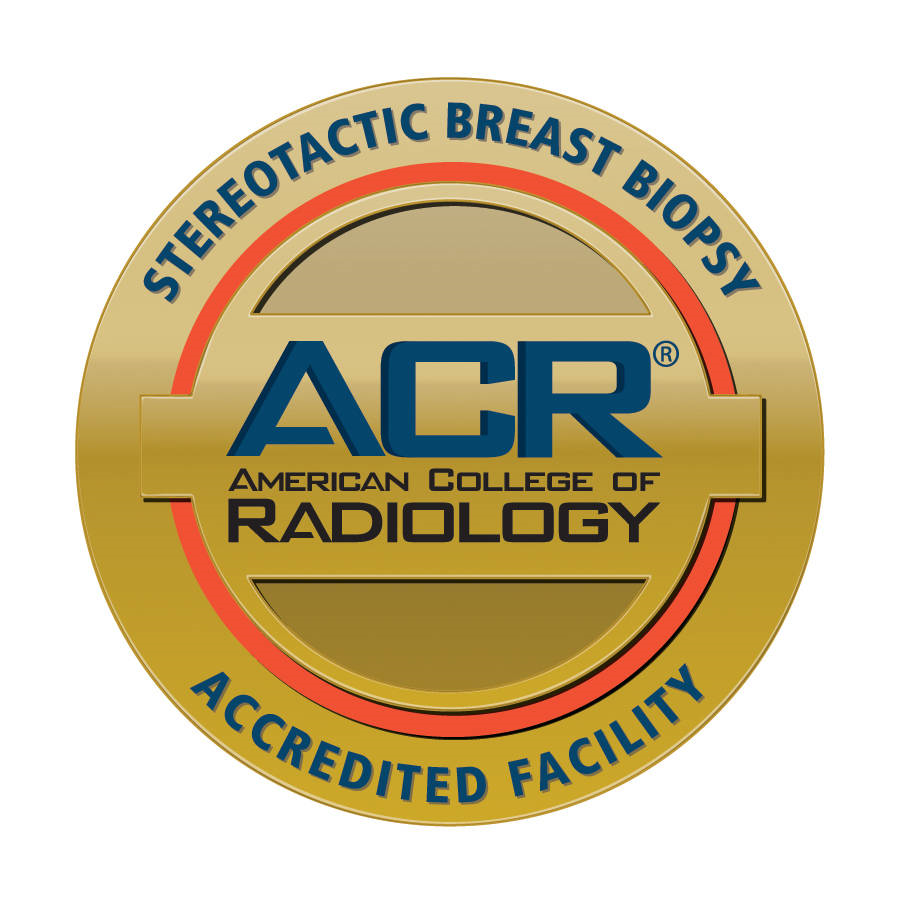Breast Biopsy

If an abnormality is found during a breast screening, your doctor may order a biopsy to further evaluate this area and determine if it is breast cancer. A breast biopsy is a procedure to remove a sample of breast tissue for laboratory testing. There are
several types of breast biopsy procedures and the results can confirm whether the area of concern is breast cancer and help determine whether you need additional surgery or other treatment.
Sansum Clinic is accredited by the American College of Radiology for meeting the highest levels of image quality and patient safety.
What to Expect
There are several biopsy procedures that can be used to obtain a sample, these include:
- Core needle biopsy is often used to evaluate a lump that is visible on a mammogram or ultrasound, or that can be felt by hand. For this procedure, you lie on your back and your doctor
will use a thin, hollow needle to remove several tissue samples from the mass, most often using ultrasound as a guide. Depending on the location of the mass, your doctor may use other imaging techniques, such as mammography or MRI to guide the
biopsy.
- Stereotactic biopsy uses mammography to pinpoint the exact location of a suspicious area within the breast. During this procedure, your breast will be firmly compressed while mammograms are taken to identify the exact location of the area that needs a biopsy. Your doctor will make a small incision into the breast to remove several samples of tissue.
- Surgical biopsy is done to remove some or all of the breast mass to be examined. For this procedure, it will be done in an operating room and sedation and local anesthetic will be used.
Breast Needle Localization
Breast localization is a procedure used to find the precise location of abnormal breast tissue and mark its location with dye or a small wire. This procedure provides important guidance to surgeons to ensure they can find the exact location of any concerning
breast tissue.
After a Breast Biopsy
After a fine-needle aspiration, core needle biopsy or stereotactic biopsy, you will go home with bandages and an ice pack over the biopsy site. You may need take it easy, but generally you can resume your usual activities. Bruising
can happen and you can ease discomfort with non-aspirin pain reliever and an ice pack.
After a surgical biopsy, you will likely go home after the procedures, however you will likely have stitches. Your health care team will review how to care for your stitches as you resume your usual activities.
Getting the Results
After a breast biopsy is completed, the tissue samples will be sent to a lab where a pathologist will examine the sample under a microscope. The pathology report will include details about the tissue sample, including a description as to if cancerous,
precancerous or noncancerous cells were found. Depending on your results, your doctor and their colleagues will help develop a plan for the next steps.